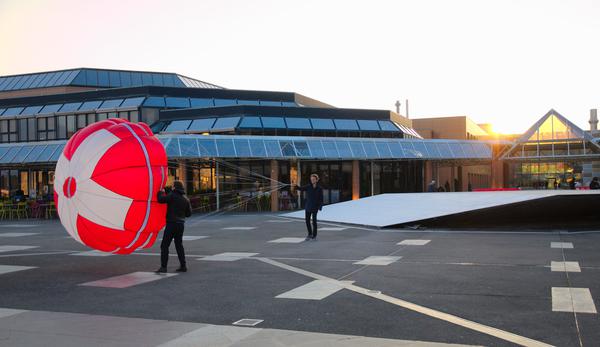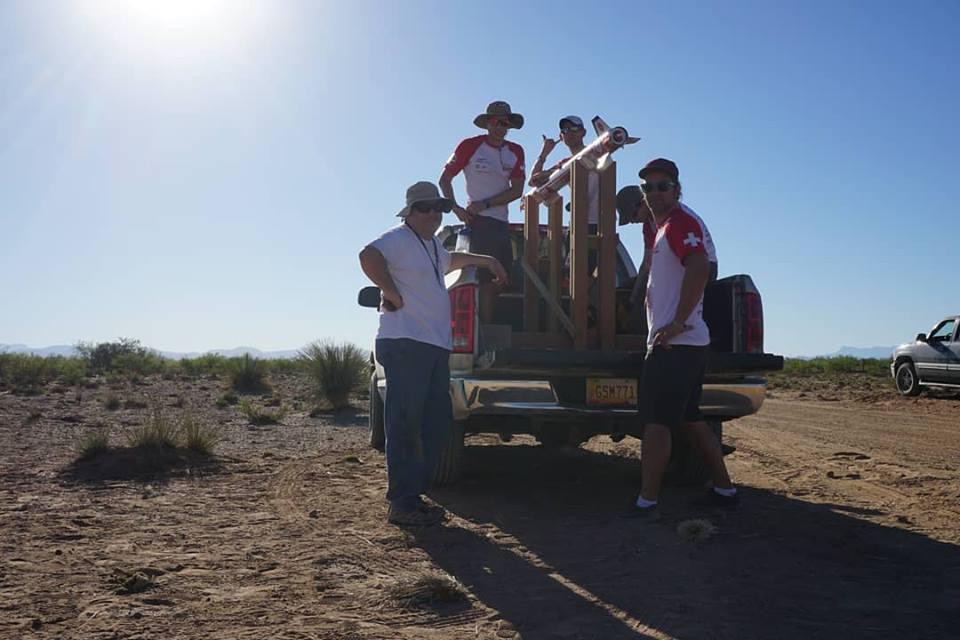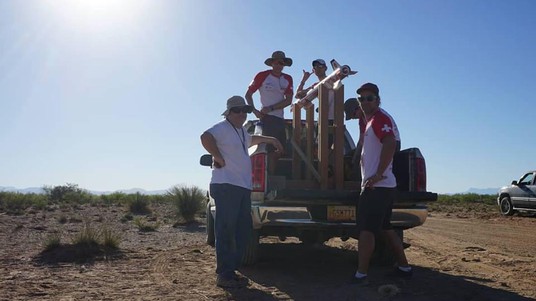An EPFL-designed rocket competed in the United States

Both Swiss teams (ETH Zurich and ETH Lausanne) won technical awards© 2018 EPFL
Students from the EPFL Rocket Team took part to the Spaceport America Cup in the New Mexico desert. They received the Jim Furtaro award for technical excellence and are now waiting for the final results.
After nearly two years of work, “Project Matterhorn,” designed by the thirty students from the EPFL Rocket Team, have competed at the 2018 Spaceport America Cup, which has been held from 19 to 23 June in the New Mexico desert. Most of the students who participated to the competition study Mechanical engineering and Physics at EPFL. The team won the Jim Furfaro award for Technical Excellence. The experts deemed that their design "demonstrates exceptional overall engineering discipline and technical skills". The EPFL team is now waiting for the final results of the competition.
This competition pits teams from universities around the globe against each other, is still not very well known on this side of the Atlantic. This year, only two European teams took part, one from the Federal Institute of Technology in Zurich (ETHZ) and one from EPFL. Last year, students from these two schools and the School of Business and Engineering Vaud (HEIG-VD) competed together as one team and came in eighth out of the 116 teams taking part.
For the competition, teams had to design, build and launch a rocket that could reach a set altitude as accurately as possible. Teams were also evaluated on the ingenuity of their design and the relevance of their payload – a requirement for every rocket.
A high-tech design
The EPFL rocket is 2.70 meters long and weighs over 20 kilos. It has a diameter of just 120 mm, so it’s very compact – which meant the students had to overcome a number of engineering challenges just to fit in all the components needed to make the rocket work. The rocket has been launched using solid propellants for four seconds, and the remainder of the flight was ballistic. “We chose an engine that could take the rocket up to about 500 meters above the target altitude,” says Martin-Monier, who is studying mechanical engineering.

More than 70 hours of sewing went into making the different versions of the parachute.©Jonathan Burkhard
Assistance from the experts
Since the project began in October 2016, experts from various parts of EPFL have helped the team, including the physics and mechanical engineering departments, the Space Engineering Center (e-Space) and the Swiss Space Center. “Their support has been very useful – they’ve lent us lab equipment, helped us check our calculations and given us constructive feedback on our ideas,” says Martin-Monier. There were even some Bachelor’s and Master’s semester projects relating to the rocket. More than one hundred credits have been awarded because of the project.
And what about 2019? The EPFL Rocket Team is already working on a new project. Anyone interested in taking part should contact jules.triomphe@epfl.ch.
Follow the EPFL Rocket Team throughout the competition by signing up for the newsletter.



